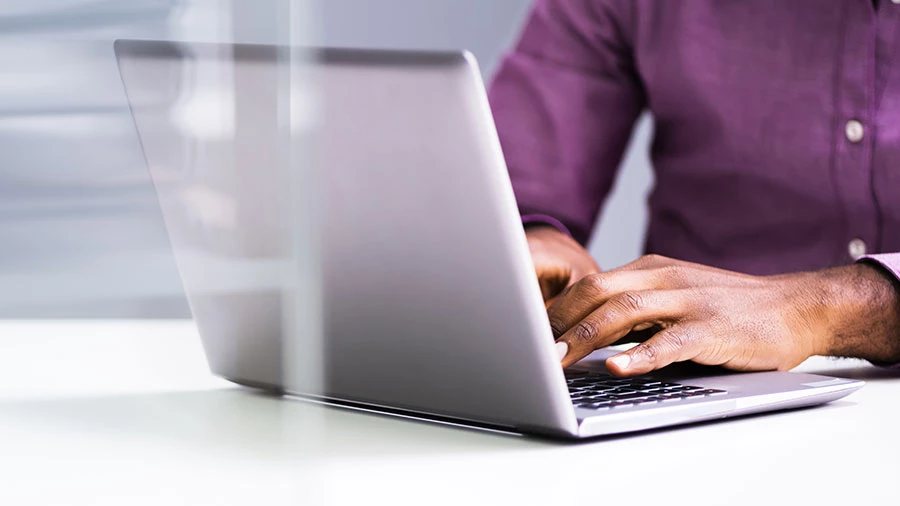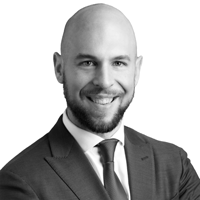China follows the principle of territoriality in IP protection. IP rights acquired under a country’s laws can only be valid and protected within that country’s territory unless an international convention or bilateral or multilateral agreement is in place.
IP protection is a longstanding and critical concern for companies operating in China. China has already made strides in recent years to improve IP protection as the government seeks to spur domestic Chinese innovation and improve the business environment for investment, such as revising its IP laws and establishing a new national IP appeals court.
What is Intellectual Property (IP)?
Intellectual Property (IP) is defined as a proprietary right enjoyed by a holder with respect to their works, inventions, trademarks, geographical indications, trade secrets, layout design of integrated circuits, new varieties of plants, etc. Among others, copyrights on works, patent rights on inventions, utility models and designs, and trademark rights are the most common IP rights.
We suggest that companies develop a comprehensive strategy to identify and protect their IP in China - including enhancing internal controls and making the best use of external resources.
China’s IP protection scope
China’s initial effective steps in IP protection began in the early 20th century with the introduction of basic laws and regulations. Significant progress occurred in the late 1970s and early 1980s during China’s economic reform and opening up. This period marked a substantial recognition by the Chinese government of the importance of IP in promoting economic growth and international trade. Several significant milestones highlight the evolution of IP protection in China:
- 1980: China became a member of the World Intellectual Property Organization (WIPO), signaling its commitment to aligning with international IP standards.
- 1982: The first comprehensive Patent Law was enacted, providing a legal foundation for patent protection and signaling a significant shift towards recognizing and safeguarding inventions and innovations.
- 1990: The introduction of the Trademark Law laid the groundwork for protecting brand identities, crucial for both domestic and foreign enterprises operating in China.
- 1991: The Copyright Law was established, extending protection to literary and artistic works, including computer software, thus encompassing a broad spectrum of creative outputs.
- 2001: China joined the World Trade Organization (WTO), necessitating compliance with the Agreement on Trade-Related Aspects of Intellectual Property Rights (TRIPS). This membership further integrated China into the global IP framework and underscored its commitment to strengthening IP laws and enforcement.
- 2008: The implementation of the National IP Strategy Outline marked a strategic shift, aiming to enhance IP creation, utilization, protection, and management.
- 2014: The first specialized IP court was established in Beijing, centralizing and improving the adjudication of IP disputes
The year 2023 was transformative for China’s IP landscape, marked by significant legislative and procedural advancements. Early in the year, the draft of the fifth amendment to the Trademark Law was released unexpectedly, while the year concluded with the State Council approving the third amendment to the Implementing Regulations of the Patent Law.
One major development was China’s accession to the Apostille Convention on March 8, 2023. This convention simplifies the process for foreign public documents from the convention country/region to be recognized in China, eliminating the need for authentication in Chinese Embassy/Consulate, while the notarization by the Local Notary Public and apostille by the relevant foreign affairs authority of the country/region is still required This change, effective from November 7, 2023, significantly streamlined the legal processes for foreign litigants in China, reducing bureaucratic hurdles and fostering a more efficient legal environment. This benefits IP owners who seek to protect their IP in China, relieving their burden of legalizing identification and power of attoney (POA) documents for each administrative litigation filed against decisions made by the CNIPA.
Additionally, China National Intellectual Property Administration (CNIPA) introduced new regulations to suspend certain trademark review cases when outcomes depend on pending procedures like invalidation or cancellation. This regulation addresses long-standing inefficiencies where review procedures were often faster than the removal of conflicting “obstacles.”
The mandatory suspension in such cases is a notable improvement, reducing unnecessary legal procedures and associated costs for stakeholders.
The Supreme People’s Court also adjusted its approach to retrials, establishing stricter criteria for retrial acceptance to manage the increasing volume of civil litigations. This move aims to focus retrials on cases with significant legal implications or nationwide impact, ensuring a more efficient judicial process. Moreover, the Supreme People’s Court’s IP Court’s jurisdiction has been refined to handle high-value IP disputes more effectively, reflecting the growing complexity and volume of such cases.
Overall, these recent developments underscore China’s commitment to enhancing its IP protection framework, aligning more closely with international standards, and addressing practical challenges faced by IP stakeholders. These changes not only foster a more robust IP environment but also enhance China’s attractiveness as a jurisdiction for international IP protection and enforcement.
IP registration
A domestic IP registration/filing in China is required to protect your IP in the country effectively.
China primarily follows a "first-to-file" rule for IP registration, which means that the first entity or individual to register IP rights will hold those rights exclusively, regardless of the original user, with limited exceptions. Thus, the first and most important strategy we can recommend is to register/file your intellectual property rights in China as soon as possible.
The tables below summarize the patent, copyright, and trademark registration procedures.
Patent Registration
|
Patent Registration |
|
|
Necessity |
Patent is valid and protected in China only after proper registration |
|
Requirement |
|
|
Authority in charge |
Patent Office of China National Intellectual Property Administration (CNIPA) |
|
Procedure |
Invention patent ⇒ Preliminarily search and analyze the application availability ⇒ Prepare documents and submit the filing ⇒ Application acceptance ⇒ Application fee payment ⇒ Application classification ⇒ Preliminary examination and verification ⇒ Supplement of docs per requirement (if any) ⇒ Application for substantial examination ⇒ Substantial examination (+ OA, if any) ⇒ Patent right grant ⇒ Handling Patent registration formalities and submitting registration fees ⇒ Issuance of Patent certificate Utility model: ⇒ Preliminarily search and analyze the application availability ⇒ Prepare documents and submit the filing ⇒ Application acceptance ⇒ Application fee payment ⇒ Application classification ⇒ Preliminary examination and verification ⇒ Supplement of docs per requirement or Patent right grant ⇒ Handling Patent registration formalities and submitting registration fees ⇒ Issuance of Patent certificate
Design: ⇒ Preliminarily search and analyze the application availability ⇒ Prepare documents and submit the filing ⇒ Application acceptance ⇒ Application fee payment ⇒ Application classification ⇒ Preliminary examination and verification ⇒ Supplement of docs per requirement or Patent right grant ⇒ Handling Patent registration formalities and submitting registration fees ⇒ Issuance of Patent certificate |
|
Timeline |
Invention: 2-3 years, for a high-value patent, could have a chance to shorten to 1.25 years Utility model: 6-9 months Design: 6-9 months |
|
Validity* |
Invention: 20 years Utility model: 10 years Design: 15 years |
|
* Calculated from application date. |
|
Copyright Registration
|
Copyright Registration |
|
|
Necessity |
Although copyright can be automatically gained upon creation and protected in China according to the international convention or agreements China signed, market participants who ever got their copyright registered can better defend against any infringement as the official certificate would at least save time and cost for proving the ownership. Besides, for software copyright, the registration certificate is required in software copyright transactions. |
|
Requirement |
|
|
Authority in charge |
National Copyright Administration and its local branches |
|
Procedure |
⇒ Documentation preparation ⇒ Application submitting ⇒ Acceptance of application documentation ⇒ Fee payment ⇒ Preliminary and substantive review ⇒ Issuance of the registration certificate and publish on the website* |
|
Timeline* |
1.5-3 months |
|
Validity |
Indefinite period: The right of authorship, right of revision, and right to preserve the integrity of the work of an author shall not be subject to restriction.
The entire life span of the author and 50 years following their death: Individual author’s rights of publication, reproduction, distribution, rental, exhibition, performance, screening, broadcasting, information network transmission, filming, adaption, translation, and compilation.
50 years following the first publication of the work: Rights of publication, reproduction, distribution, rental, exhibition, performance, screening, broadcasting, information network transmission, filming, adaption, translation, compilation of works of a legal person or any other organization and works created in the course of employment in which copyright (except for right of authorship) belongs to a legal person or any other organization. (if there’s no publication within 50 years from completion of the creation of the work, it shall not be protected by this Law.)
50 years following the first publication of the work: Rights of publication, reproduction, distribution, rental, exhibition, performance, screening, broadcasting, information network transmission, filming, adaption, translation, compilation of film works, works created using methods similar to filmmaking and photographic works. (If there’s no publication within 50 years from completion of the creation of the work, it shall not be protected by this Law.) |
|
*Different types of copyright registration may differ. |
|
Trademark registration
|
Trademark Registration |
|
|
Necessity |
Trademark registrants enjoy exclusive rights to use trademarks and are protected by the law. Due to the “first-to-file” principle in China, trademark registration should be made as early as possible. |
|
Requirement |
|
|
Authority in charge |
Trademark Office of CNIPA |
|
Procedure |
⇒ Registration availability pre-checking ⇒ Documentation preparation ⇒ Application submitting ⇒ Preliminary review of documentation and issuance of acceptance notice (only indicate the documentation complied with the basic requirements) ⇒ Substantive review of registration availability ⇒ Preliminary approval and announcement notice (3 months for others to raise opposition, if any) ⇒ Final approval and registration announcement ⇒ Issuance of registration certificate |
|
Timeline* |
3-6 months |
|
Validity |
10 years |
|
*Calculated from registration date |
|
Trade secrets
Foreign businesses may claim damages and seek compensation due to infringement of trade secrets through the courts. However, the procedure can pose a significant burden to the company, which is responsible for providing evidence that the defendant knows, obtains, and has disclosed the trade secret. (This burden of proof appears to be reversed for civil trade secret suits when the plaintiff makes certain prima facie showings as per the 2019 amendments.)
According to Article 9 of the Anti-Unfair Competition Law, a trade secret refers to any technical information or business operation information that is unknown to the public, has commercial values, and about which the owner has taken secret-keeping measures.
Administered by the State Administration for Market Regulation (SAMR), this law protects information that has ‘negative value’, including those gained from failed research data or business models. The law specifies that if a third party knows about an act of infringement of a company’s trade secrets, this third party will be considered an alleged party to the infringement of the trade secret as well.
Set up a thorough internal IP protection system
In addition to registration, businesses should establish a thorough internal IP protection system, adopt preventive measures to protect IP and confront IP infringements in business operations.
This system can be set up with the help of external third-party professional services, especially for businesses that are new to China and have limited knowledge of China’s trademark protection situation. Among others, the below strategies serve as good starting points:
- Provide training for all employees (especially those who have access to key IP information) to ensure their actions do not compromise the organization’s IP protection;
- Control and monitor employee’s access to key equipment and areas and limit the likelihood that any one employee has access to all the information needed to copy IP;
- Incorporate IP protection into facility design and the business’s daily operational processes;
- Utilize technologies to track and protect IP;
- Be careful with business partners and include proper IP protection clauses in all contracts and agreements;
- Assign specific team or personnel to focus on IP management, including integrating the IP-related data and tracking the status of the IP protection;
- Actively monitor for infringement at industry trade shows and trade fairs, through IP publications, and on the Internet;
- Monitor competitor’s IP status to see if there is any chance to take proactive defending actions;
- Assess the registration necessity in any country/region and get the registration started as early as possible; and
- Take action to fight against any infringement by competitors and/or other target market participants.
Benefitting from current IP protection measures
China has been making substantial efforts to improve the IP protection offered in the country. Besides a lawsuit, reporting infringement to the competent authority directly would be time and cost-efficient and can help IP rights holders achieve the following:
- Force the infringer to stop infringing immediately;
- Confiscate illegal gains of the infringer;
- Impose penalty on infringer; and
- Demand the infringer to compensate the right owner as asked by the owner.
Filing your IP rights with customs
Businesses engaged in import-export should file their patent, copyright, or trademark with the customs authorities. This is necessary because:
- It is a prerequisite for the customs to take active IP protection measures;
- It helps customs find infringing goods; and
- It can have a deterrent effect on the infringer.
To file with customs, applicants shall either be the IP owner (for trademark and patent, its IP registration shall be done with the competent authority of China, and for copyright, its country of origin should be a member of the Berne Convention for the Protection of Literary and Artistic Works) or a qualified agent in China.
Timeline
The IP customs filing takes around 1.5 months.
General procedure
- Documentation preparation;
- Application submitting;
- Review of application;
- Fee payment; and
- Filing successfully.


























